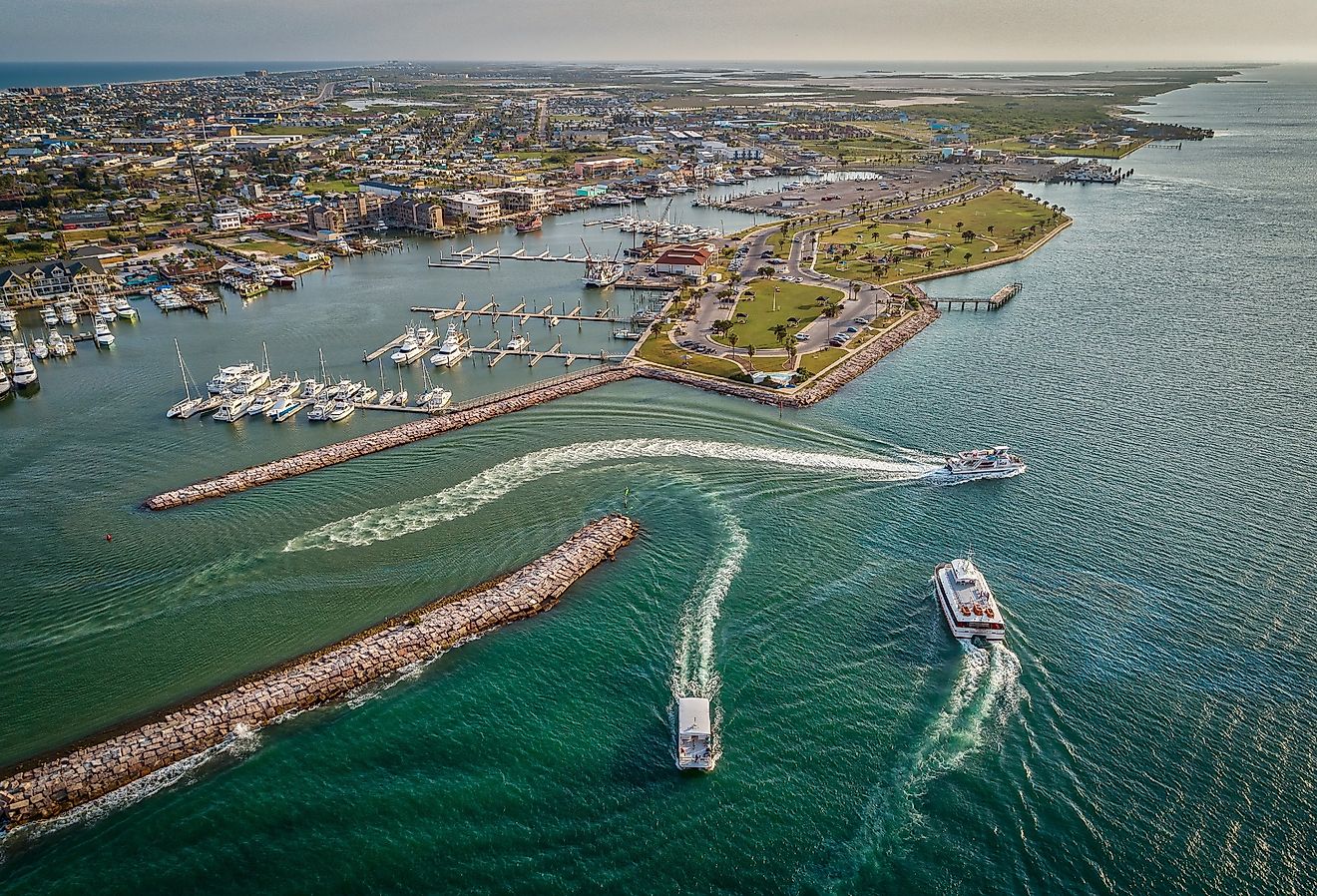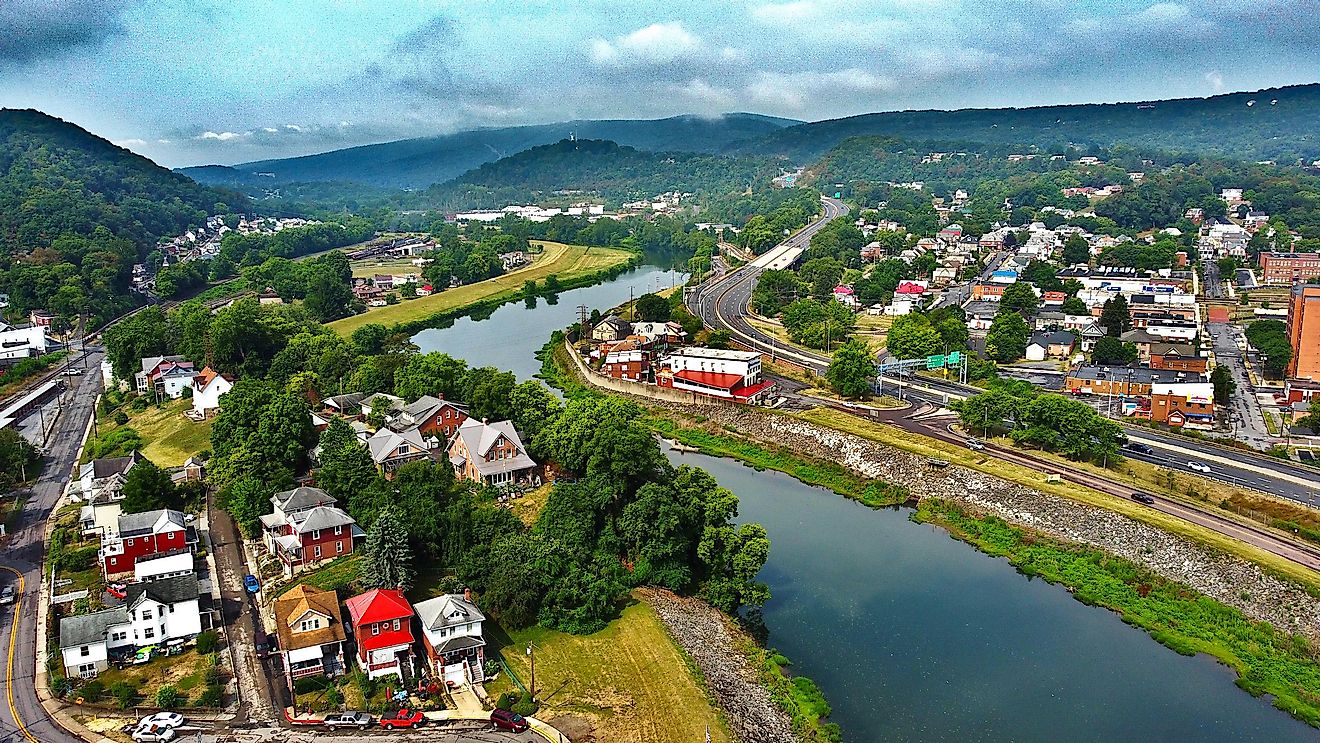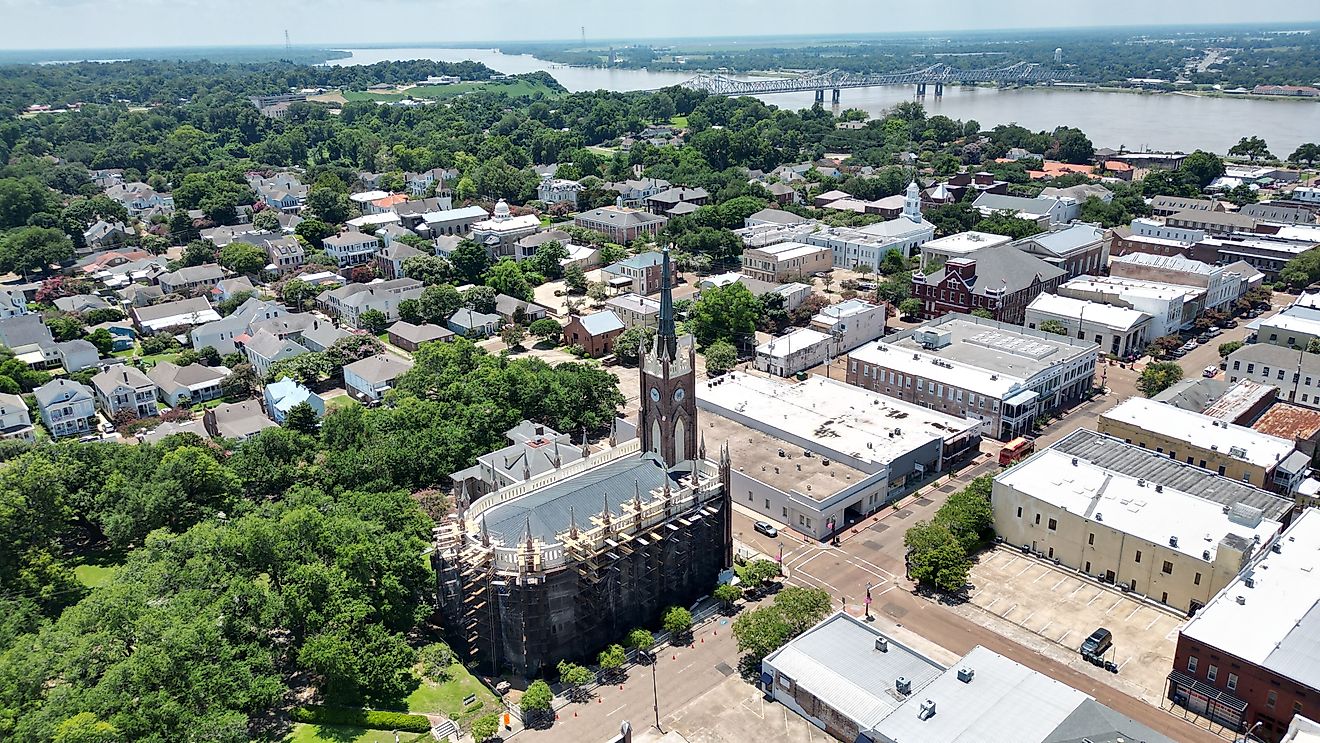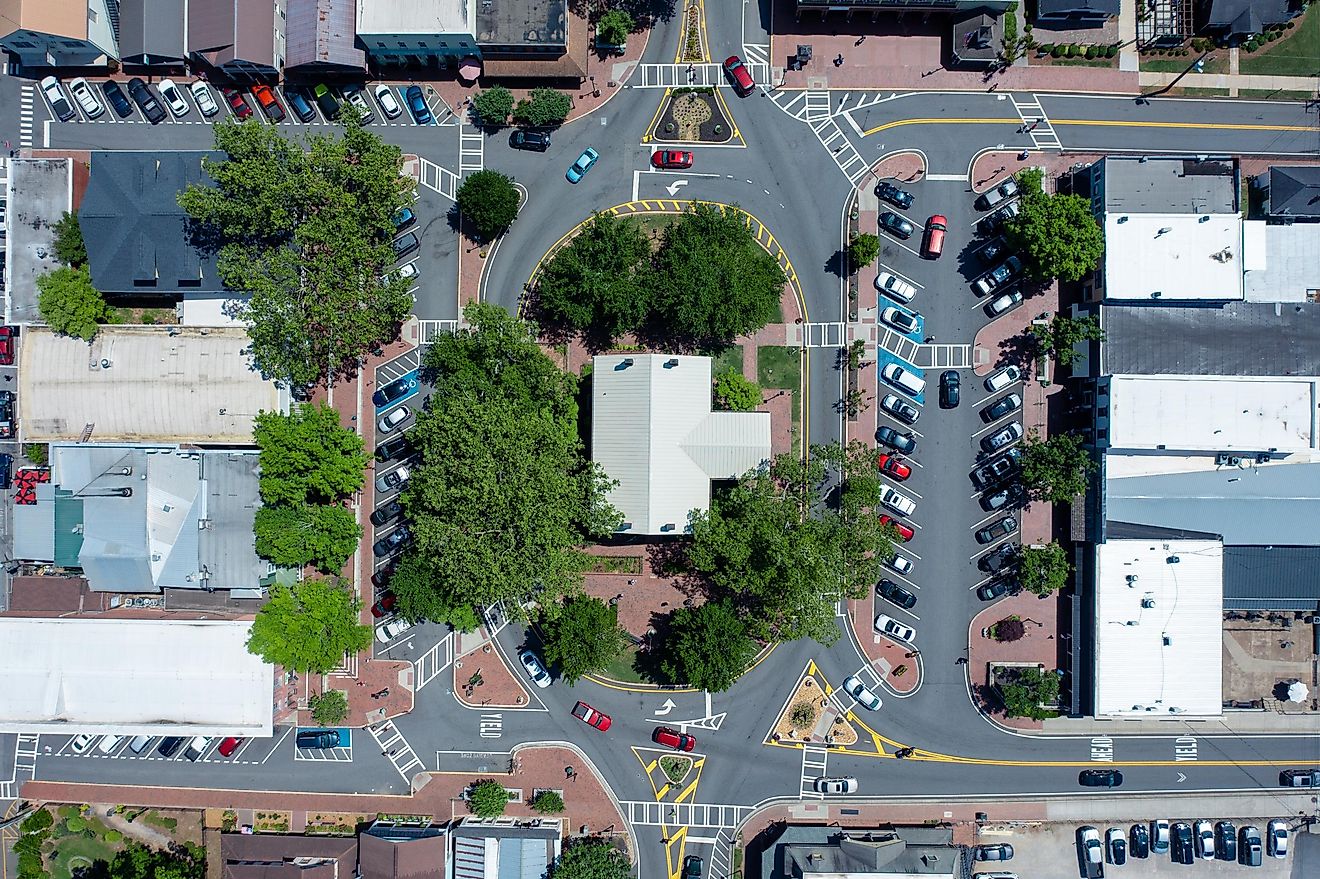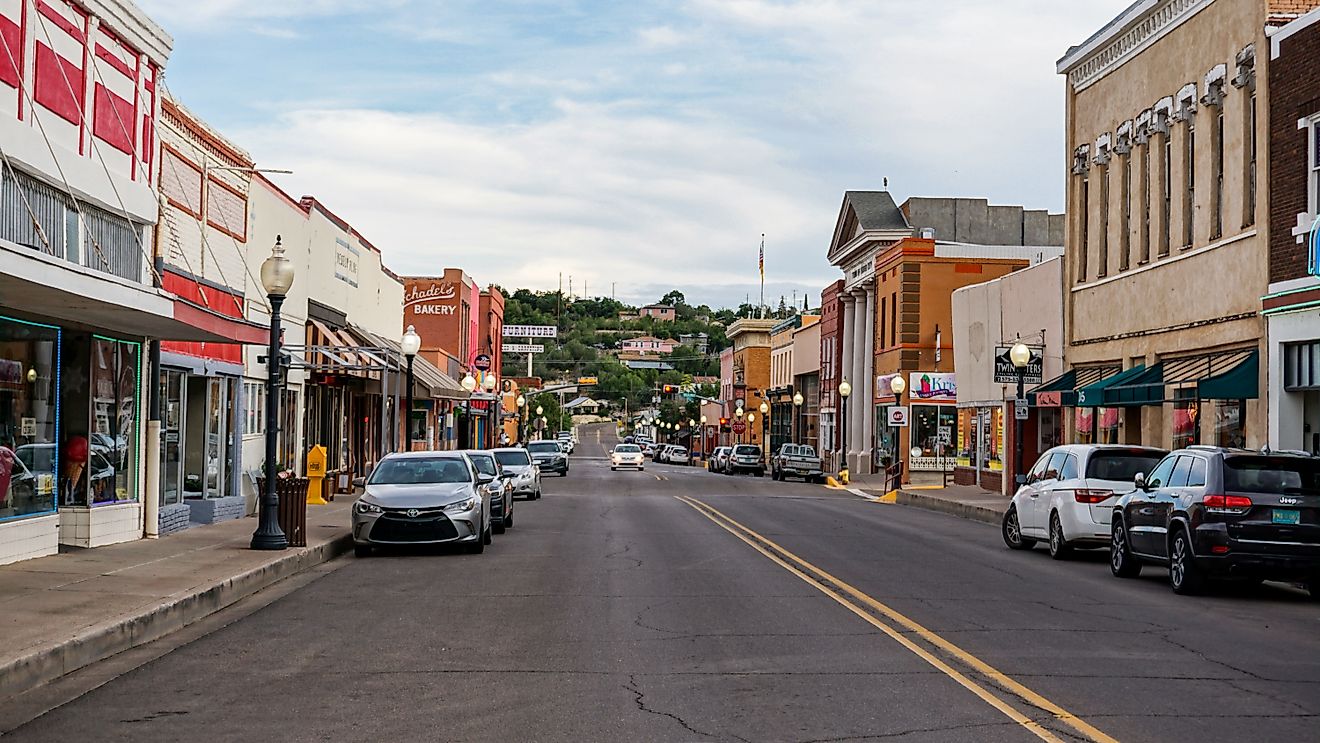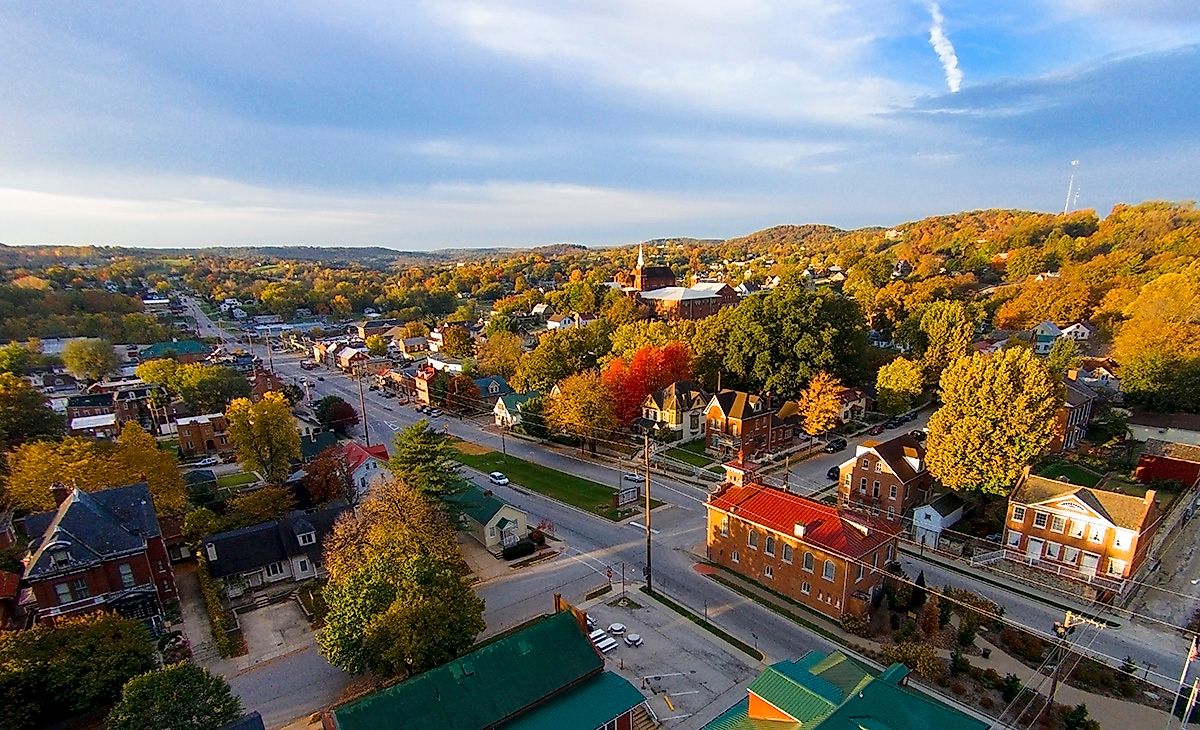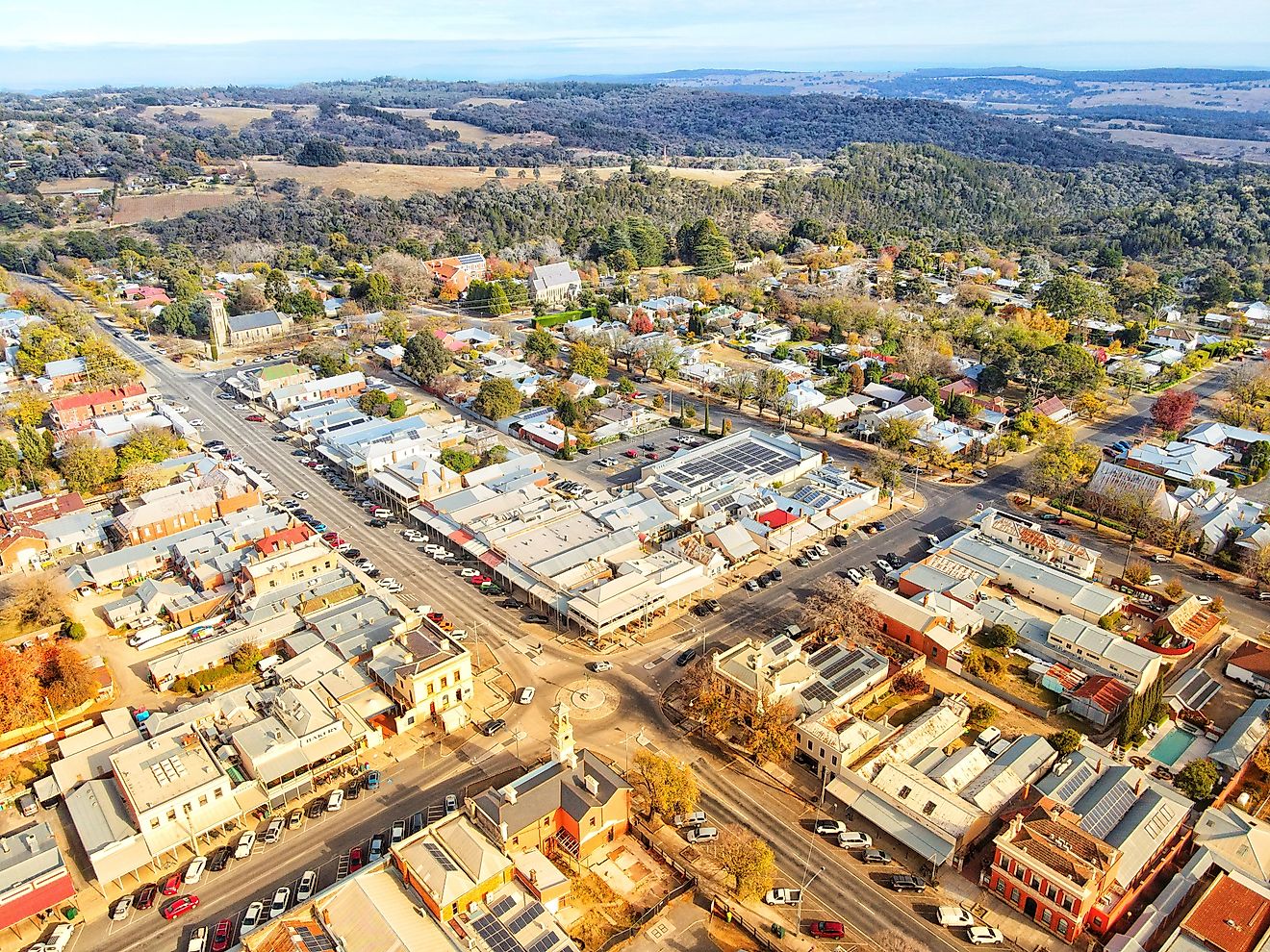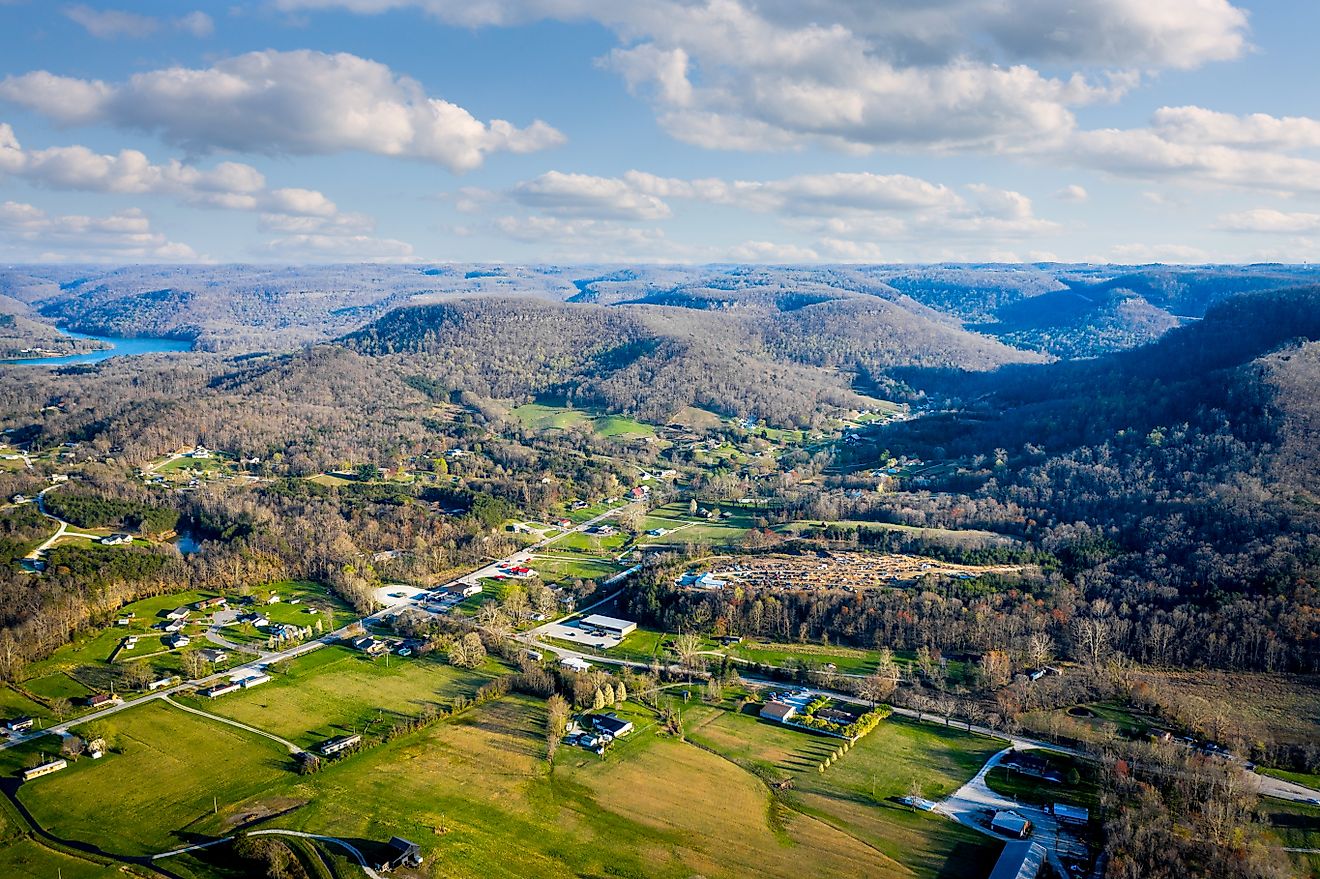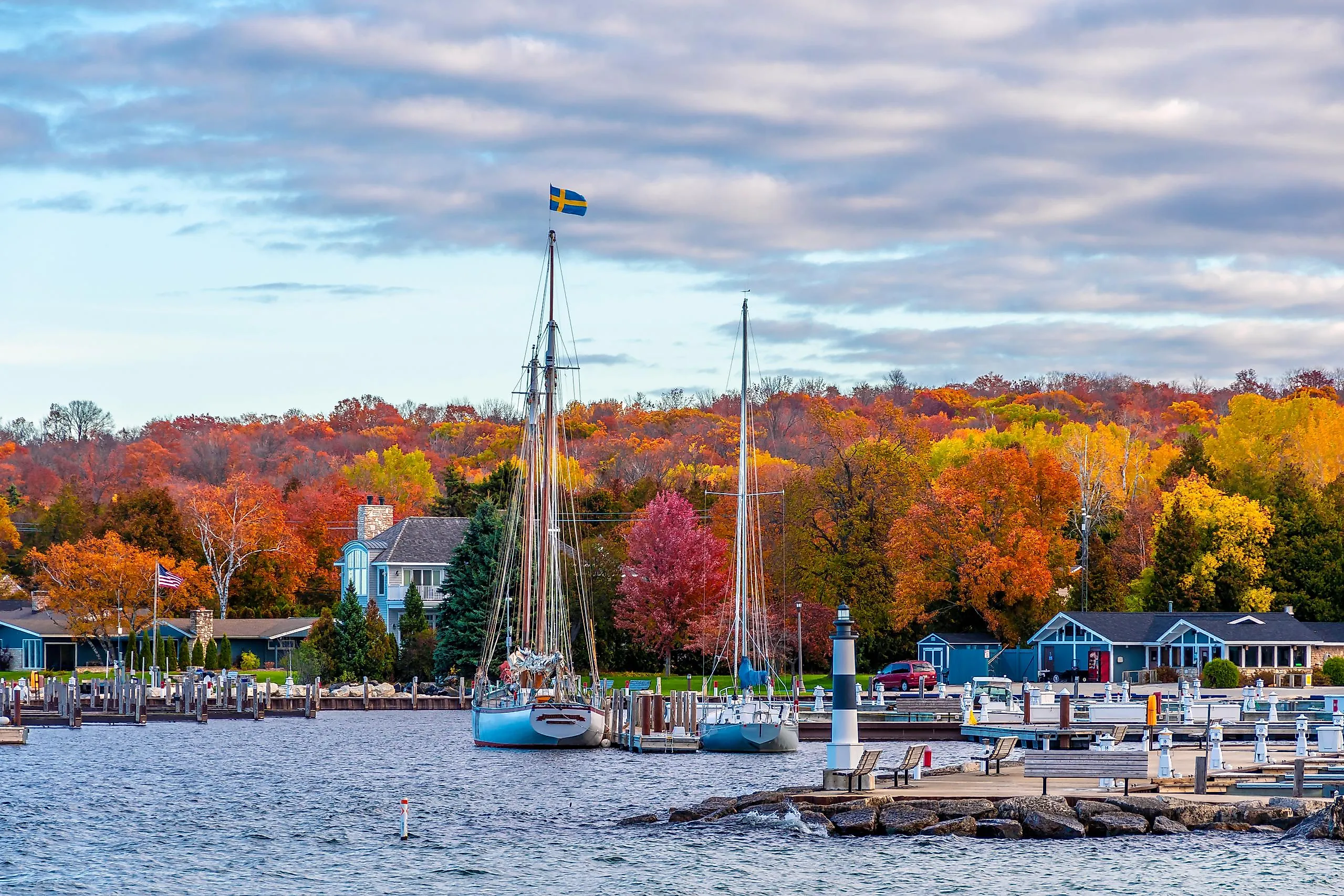
These 7 Wisconsin Towns Have The Best Historic Districts
As America’s Dairyland, dairy farming figures prominently in Wisconsin's industry and heritage. However, Wisconsin’s history is much more than dairy farming, with ties to agriculture, mining, and businesses driven by the Great Lakes and the Mississippi River.
Wisconsin’s towns offer unique opportunities to explore the state’s diverse heritage, from the estates of wealthy merchants and fur traders to Scandinavian-influenced villages, pre-Antebellum architecture, and historic wool mills. Here are seven Wisconsin towns with the best historic districts worth discovering.
Mineral Point

Mineral Point’s storied history as the hub of Wisconsin lead mining creates a heritage-filled downtown area. As the state's first listing on the National Register of Historic Places, Mineral Point's downtown features over 500 structures standing as a testament to the town’s miners. They capture the architectural characteristics of several styles, from Federal to Arts & Crafts and Italianate to Victorian.
Start at Orchard Lawn, the site of the Mineral Point Historical Society. The former home of Cornish immigrant merchants, the Gundry family, the 1868 Italianate mansion features locally quarried sandstone set against a magnificent 11-acre estate. Tours include the lovely home, gardens, and arboretum. The Gundry, Gray & Co. storefront that helped create their wealth still sits on High Street, with the original cast zinc dog still keeping watch above the entry.
Circa 1840s Cornish stone cottages are one of the most charming town features, some of which served as kitchens for wealthy households. An example is the historic 1850s Cothren House on Tower Street. However, the Pendarvis Historic Site captures the town's history beautifully. The cluster of carefully restored and preserved stone cottages and log structures is on Shake Rag Street, named after the miners' wives who would shake their rags to flag down their husbands at mealtime.
The circa 1836 Walker House is one of the oldest inns in Wisconsin, but it is not typical of the period. The lodging is carved into the rocky hillside, first mined for lead ore in the 1820s. Visitors can sit in 200-year-old miners' caves and explore the stone walls for fossils. It also features a unique soapstone wood-burning stove. Now a historic 12-room inn, it is the perfect place to end your visit, whether for an overnight stay or a meal in its authentic Cornish Pub.
Prairie du Chien
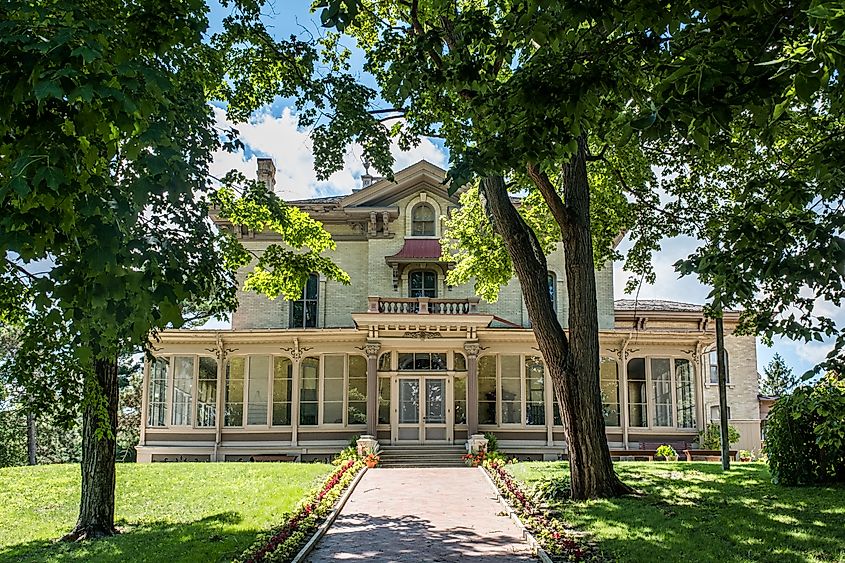
Located in Wisconsin’s Driftless Area, Prairie du Chien is Wisconsin’s second-oldest settlement. French voyageurs and coureurs des bois contributed to the fur trade of the area well into the eighteenth century. The mighty Mississippi flows around the picturesque historic island district.
St. Feriole Island is the town’s most significant historical site, featuring over a dozen structures and charming restored homes. The island is the site of Wisconsin’s only War of 1812 battlefield, fought at the Battle of Prairie du Chien in 1814. The stone building Brisbois Store—Fur Trade Museum dates back to the early 1850s and sits on land that exchanged hands between several prominent fur traders/companies. However, the meticulously restored 1871 Italianate-style Villa Louis is the proverbial gem in the island's 25-acre crown. Authentically furnished Victorian décor, a manicured lawn, charming ponds, and elegant gardens offer an impressive glimpse into how the wealthy lived.
Rightly dubbed “The Dungeon,” the Old Crawford County Jail is the oldest surviving jail in Wisconsin. Hidden beneath the town courthouse, the dark and eerie jail’s original heavy iron doors, leg irons, and arm chains hint at dismal convict life in 1867.
If you are feeling a little peckish, the Prairie du Chien landmark Pete’s Hamburger Stand has been serving up old-fashioned burgers since 1909. Although they close over the winter, you can feast on their patented pan-fried burger with onions between May and October.
New Glarus
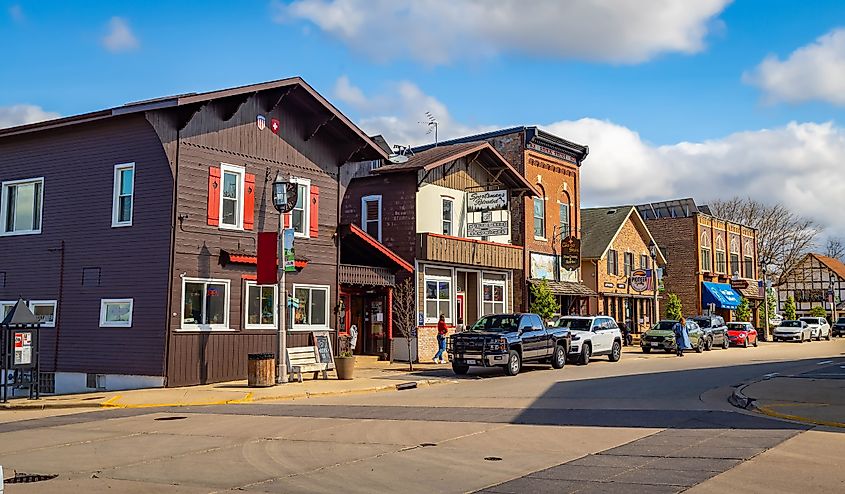
New Glarus is aptly known as America’s Little Switzerland, flaunting a European-influenced flair worth exploring. Located in southern Wisconsin, the Swiss Historical Village is an old-world adventure featuring 14 buildings filled with authentic artifacts donated by descendants of the town’s original settlers.
Puempel's Olde Tavern, built in 1893, welcomed new Swiss arrivals settling in New Glarus. The tavern's collection of 1913 murals depicts the role Swiss, Austrian, and American immigrants played in the town’s history. The original 1887 railroad depot is now the starting point for the Sugar River State Trail. Follow the abandoned railroad line featuring 14 trestle bridges and travel through lovely rolling hills and woods dotted with farms and remnant prairies.
Located in dairy country, New Glarus’ first cheese factory shipped American cheese to England and is now a local hotspot for generous servings of ice cream and a diverse menu from the grill. Kennedy's Ice Cream & Grill still sports the circa 1873 stone base, and the cheerful yellow eatery is a popular spot along the local bike trail.
Speaking of dairy, one of New Glarus’ most unique attractions is the New Glarus Cow Parade. Zurich-made cow statues, with whimsical designs by local artists, appear throughout the town.
The Chalet Landhaus Inn is the perfect stopover or dining spot. The distinct architecture is pure Swiss Alps, with its iconic carved wood balconies complete with charming flower boxes.
Port Washington
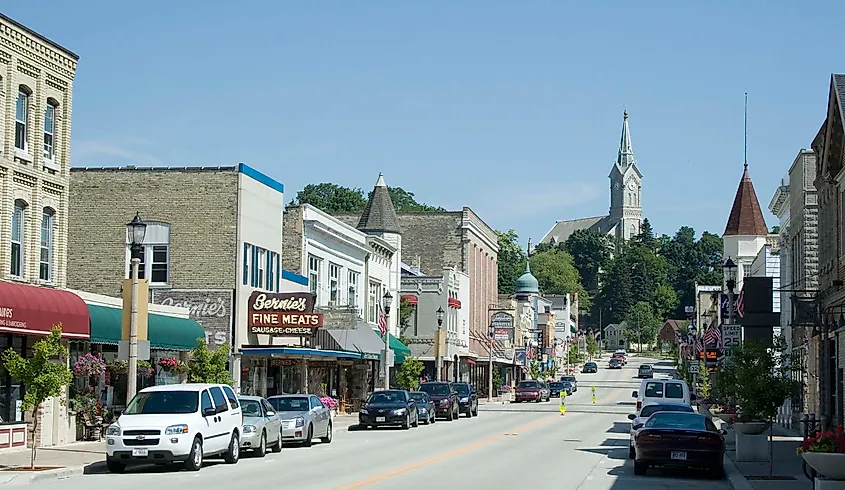
Sitting on the scenic shores of Lake Michigan, Port Washington’s historic harbor and village exude maritime charm. Known simply as Port, the dynamic waterfront offers stunning lake views, while the historic buildings along Franklin Street and Grand Avenue hint at the town’s history as a Wisconsin industrial hub.
Despite a fire in 1899, the town still features the largest collection of pre-Civil War buildings in Wisconsin. Follow the numbered copper insets in the sidewalk on the Franklin Street Walking Tour to find examples of this historically significant pre-Antebellum architecture, including The J. Langley Building, the Wisconsin House Hotel and Saloon, The Theodore Victor Building, and The H.H. Stone Building.
The 1860 light station overlooks the town atop the north bluff, where you can tour the keeper’s living quarters and climb up to the lantern room. The Tall Ship Experience is not an annual event, but it is worth a visit the next time the show comes around. Whether you head out on the lake on one of the three Tall Ships or take a deck tour, it is one of the best ways to experience the area’s maritime heritage.
The impressive façade of the historic Port Hotel hints at the unique dining experience awaiting at Moonlight Tavern & Supper Club. Savor the creative modern menu in a charmingly rustic-chic tavern or sip drinks on the pretty patio.
Cedarburg
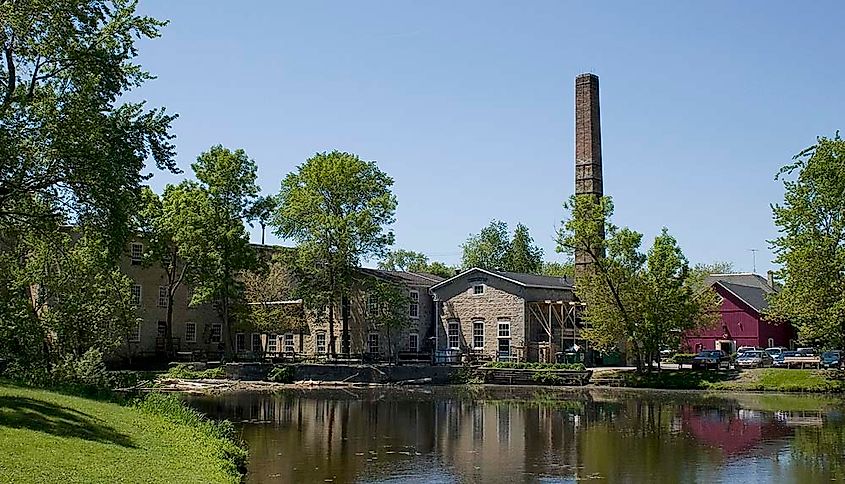
Just 20 miles north of Milwaukee, Cedarburg is a convenient day trip for Milwaukeeans. Over 170 years ago, German and Irish immigrants began arriving at the peaceful location on Cedar Creek to take advantage of the town’s wool industry.
Cedar Creek Settlement centers around the transformed Wittenberg Woolen Mill, with its original beams, floors, and carefully preserved equipment. Constructed in 1864 by German immigrants, the site is now home to Cedar Creek Winery, offering award-winning wine tastings set against the gently flowing waterfall of Cedar Creek.
The town celebrates the wool industry at the Wisconsin Museum of Quilts and Fiber Arts. The collections at the restored 1850s barn attract crafty travelers and admirers of folk art. Browse the whimsical permanent collection and discover cleverly displayed traveling exhibits at Wisconsin’s singular museum devoted to enduring artisanal handicrafts. Once inspired, head to Ye Olde Schoolhouse Quilt Shop. A rainbow of reproduction prints and homespun originals stacks the shelves. There is also an array of meticulously sewn quilts and wall hangings to adorn the home.
Head to your hotel, exploring the Main Street where the beautiful buildings are pure magic. Join fellow guests for a wine and cheese social at the Washington House Inn before heading to your elegantly decorated room. Awake to a generous complimentary breakfast known for mouthwatering hearty dishes and fresh-baked scones.
Sturgeon Bay
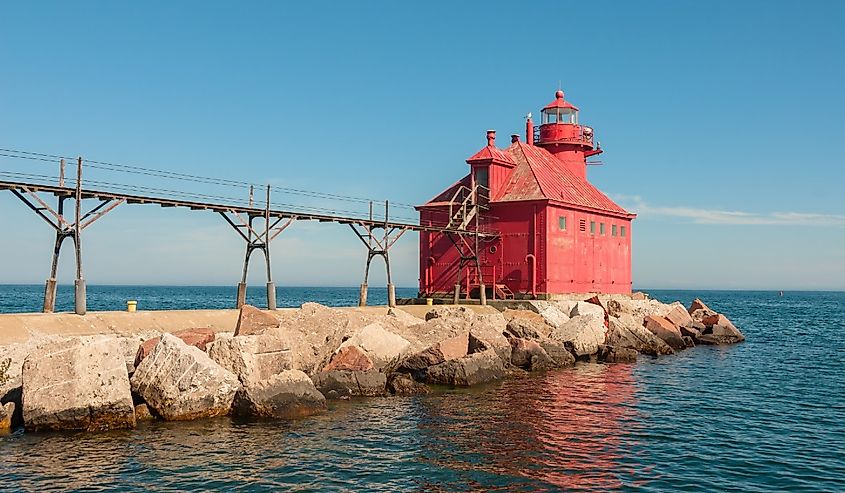
Sturgeon Bay is part of Lake Michigan’s Green Bay, on the Door Peninsula. As a prominent 19th-century shipbuilding center, the town’s storied maritime history is evident along its working waterfront.
Door County Maritime Museum offers insights into the vital role Sturgeon Bay played in World War II, producing a Naval ship every five days! Sturgeon Bay Ship Canal is a popular spot for maritime and engineering enthusiasts who admire 19th-century ingenuity. Built between 1872 and 1879, the canal directed boats away from the Death’s Door Strait as a safe detour. The ship canal is a testament to the area’s lake-faring past, with many points of interest, including a trail along the canal’s nature preserve and the Sherwood Point and Pierhead lighthouses.
The 1901 Door County Granary pays homage to the turn-of-the-20th-century grain elevator, tying the history of the outlying farms with the waterfront and railway. The striking site’s free tours offer insights into the agricultural side of Sturgeon Bay.
The Winter Fleet is a unique Sturgeon Bay winter experience when enormous ships, ranging from 500 to more than 1,000 feet long, head along the Sturgeon Bay Canal to the Fincantieri Bay Shipbuilders facility. This is a sight to behold, as these mammoth crafts are usually only mere dots spotted on Lake Michigan’s horizon.
Recover from your day of discovery at Door County Fire Co., a charming local bar and restaurant in the historic Sturgeon Bay fire station, serving up fresh fish and a menu of local favorites.
Sister Bay
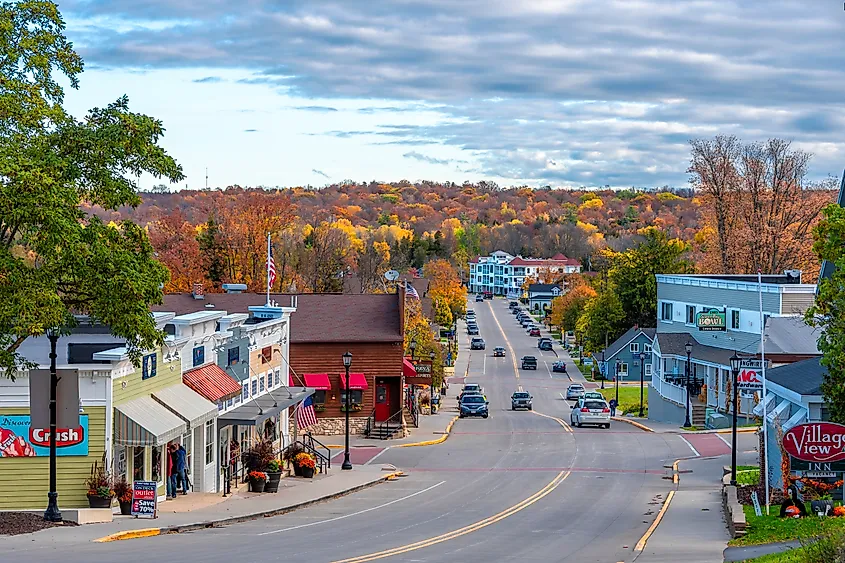
Sister Bay is Door County’s largest village, where the lovely shoreline and views of Green Bay are a popular summertime destination. The town’s Swedish heritage weaves a rich history at the historic open-air museum, Corner of the Past.
The 7-acre site is an authentic open-air museum, including historic farm buildings, cottages, a sawmill, and log cabins filled with authentic artifacts. The carefully restored 1875 Anderson family farmhouse features some of the family’s original furniture and early 20th-century pieces typical of daily life.
Seaquist Orchards is a multi-generation family farm dating back to the early 1900s. Today, the orchards span 1,300 acres across 30 miles of the Door Peninsula, where the family grows several varieties of sweet cherries, apples, and pears. Take an educational tour, pick your own cherries, or sample the bakery's scratch-made fruit pies and their famed Swedish almond cake.
Al Johnson’s Swedish Restaurant & Butik put Sister Bay on the map. The family-owned restaurant serves authentic Swedish fare, including renowned Swedish meatballs and pancakes with lingonberries. Servers dress in traditional Scandinavian garb while goats graze atop the restaurant’s sod roof. The goats’ first appearance 50 years ago launched the Roofing of the Goats, which is now an annual event, kicked off with a goat parade. Their beer garden, Stabbur, is a welcoming spot to soak up the cheerful ambience while enjoying drinks, satisfying food, and live music.
Where Wisconsin’s Past Comes to Life
Wisconsin’s historic districts balance yesterday's intrigue with today's modern experiences. Whether you are mapping out your next road trip, planning a weekend getaway, or looking for a nostalgic experience, there is a Wisconsin town sure to fit the bill. Scenic landscapes, a bountiful food and wine scene, and surprising adventures will appeal to anyone with an explorer's spirit. These seven towns will inspire your next trip, whether you choose just one or add all of them to your bucket list.
